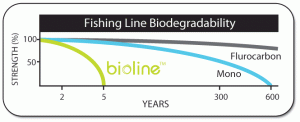The Amazing Yurt, A Time Tested Shelter
 A yurt is a portable, felt-covered, wood lattice-framed dwelling structure used by nomads in the steppes of Central Asia. The word yurt is originally from the Turkic word meaning “dwelling place” in the sense of “homeland”; the term came to be used in reference to the physical tent-like structures only in other languages. In Russian the structure is called “yurta” (юрта), whence the word came into English.
A yurt is a portable, felt-covered, wood lattice-framed dwelling structure used by nomads in the steppes of Central Asia. The word yurt is originally from the Turkic word meaning “dwelling place” in the sense of “homeland”; the term came to be used in reference to the physical tent-like structures only in other languages. In Russian the structure is called “yurta” (юрта), whence the word came into English.
In Kazakh (and Uyghur) the term for the structure is kiyiz üy (киіз үй, lit. “felt home”). In Kyrgyz the term is boz üý (боз үй), literally “grey house”, because of the colour of the felt. In Turkmen the term is both ak öý and gara öý , literally “white house” and “black house”, depending on its luxury and elegance. In Mongolian it is called a ger (гэр). Afghans call them “Kherga”/”Jirga” or “ooee”. In Pakistan it is also known as gher (گھر). In Hindi, it is called ghar (घर), which means Home.
Traditional yurts consist of a circular wooden frame carrying a felt cover. The felt is made from the wool of the flocks of sheep that accompany the pastoralists. The timber to make the external structure is not to be found on the treeless steppes, and must be traded for in the valleys below.
The frame consists of one or more lattice wall-sections, a door-frame, roof poles and a crown. Some styles of yurt have one or more columns to support the crown. The (self-supporting) wood frame is covered with pieces of felt. Depending on availability, the felt is additionally covered with canvas and/or sun-covers. The frame is held together with one or more ropes or ribbons. The structure is kept under compression by the weight of the covers, sometimes supplemented by a heavy weight hung from the center of the roof. They vary regionally, with straight or bent roof-poles, different sizes, and relative weight.
It is designed to be dismantled and the parts carried on camels or yaks to be rebuilt on another site.






Leave a Reply